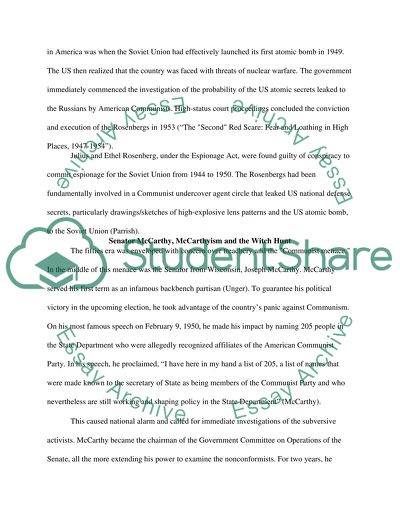Cite this document
(“The Second Red Scare Essay Example | Topics and Well Written Essays - 1500 words”, n.d.)
The Second Red Scare Essay Example | Topics and Well Written Essays - 1500 words. Retrieved from https://studentshare.org/history/1445439-the-second-red-scare-mccarthyism-and-the-effects
The Second Red Scare Essay Example | Topics and Well Written Essays - 1500 words. Retrieved from https://studentshare.org/history/1445439-the-second-red-scare-mccarthyism-and-the-effects
(The Second Red Scare Essay Example | Topics and Well Written Essays - 1500 Words)
The Second Red Scare Essay Example | Topics and Well Written Essays - 1500 Words. https://studentshare.org/history/1445439-the-second-red-scare-mccarthyism-and-the-effects.
The Second Red Scare Essay Example | Topics and Well Written Essays - 1500 Words. https://studentshare.org/history/1445439-the-second-red-scare-mccarthyism-and-the-effects.
“The Second Red Scare Essay Example | Topics and Well Written Essays - 1500 Words”, n.d. https://studentshare.org/history/1445439-the-second-red-scare-mccarthyism-and-the-effects.


